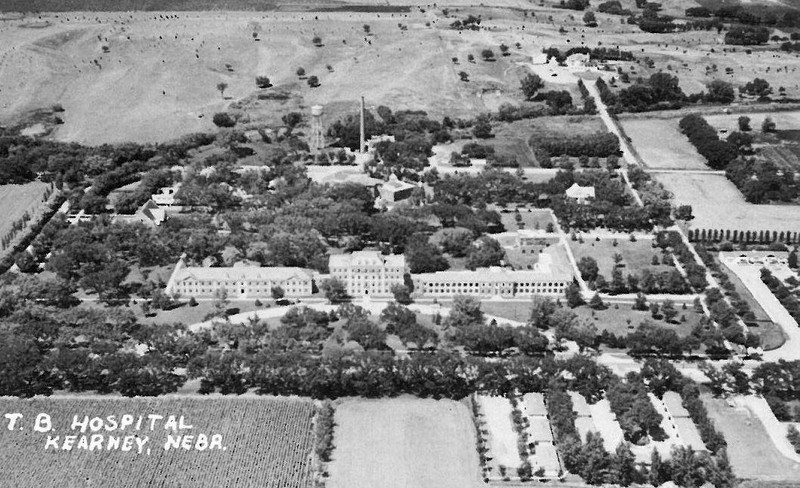Nebraska Tubercular Hospital
Introduction
Text-to-speech Audio
Images
Aerial View of TB Hospital

Postcard of Sanitarium

Backstory and Context
Text-to-speech Audio
The Frank Home, after being a private dwelling, was bought for use by the hospital’s chief of staff. The nearby Currie home, which is no longer in existence, was a home for the nurses of the hospital. Shortly thereafter, the building that is now West Center was completed. The hospital itself was more or less self-sustaining, by having chickens, hogs, a garden and an ice plant. The building was enlarged in the 1930s, and another building was built for men using Public Works Administration (PWA) funds. When the Currie home was torn down, another building was built for nurses in 1957, which was the last building built on site. The site ceased to function as a hospital in 1971.
Healthcare was income based and integrated, which was revolutionary for the time. Blacks, Latino, Indigenous were cared for along side white patients. Patient care was rudimentary, with patients expected simply to cover their mouths when they would cough, and they carried a small paper bag around with them, and when it was full, it would be incinerated. Employees were given a skin test and an x ray every six months to monitor whether they'd caught the disease themselves. Visitors to patients would be expected to check in, and a nurse would watch children while adults would visits. Doctors at the time believed fresh air, open spaces and exercise were the keys to cure the disease. Some patients enjoyed exercise, some worked for the hospital growing food or other things, and some took up a hobby, such as leatherwork.
Kearney State College absorbed the site in 1972, and subsequently remodeled the hospital for use by the college. The Frank Home was placed on the National Historic Register in 1973, and the East Sun building became the college’s business and technology department.
Sources
McKee, Jim. How State Tuberculosis Hospital Becomes UNK, Lincoln Journal-Star. October 15th 2016. Accessed December 8th 2020. https://journalstar.com/news/state-and-regional/nebraska/jim-mckee-how-state-tuberculosis-hospital-becomes-unk/article_942c8e7e-9637-5a48-86a4-8736e8ff065d.html.
https://journalstar.com/news/state-and-regional/nebraska/jim-mckee-how-state-tuberculosis-hospital-becomes-unk/article_942c8e7e-9637-5a48-86a4-8736e8ff065d.html
www.loc.org
